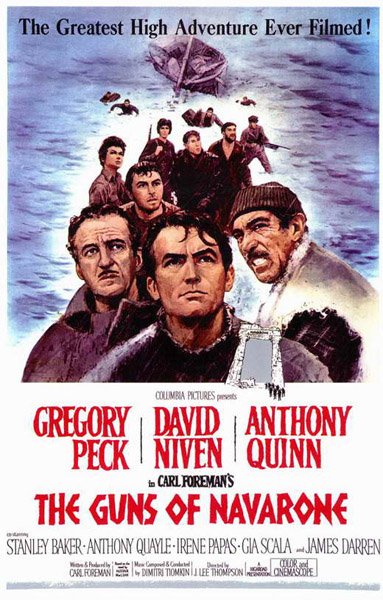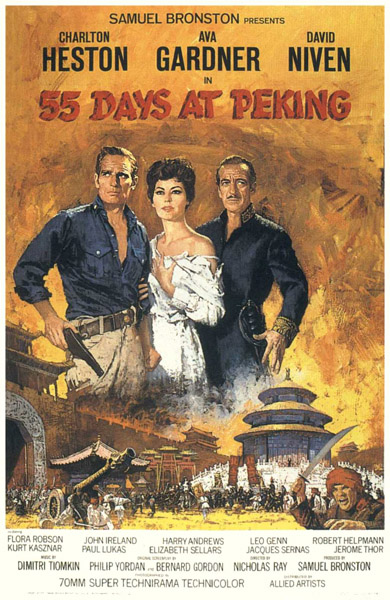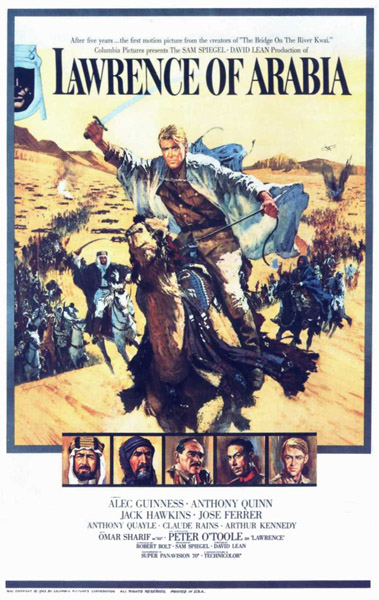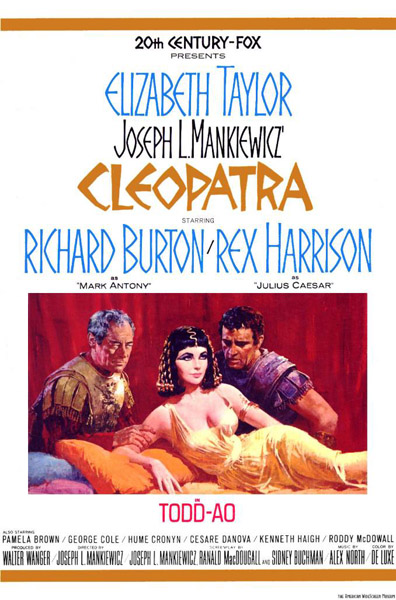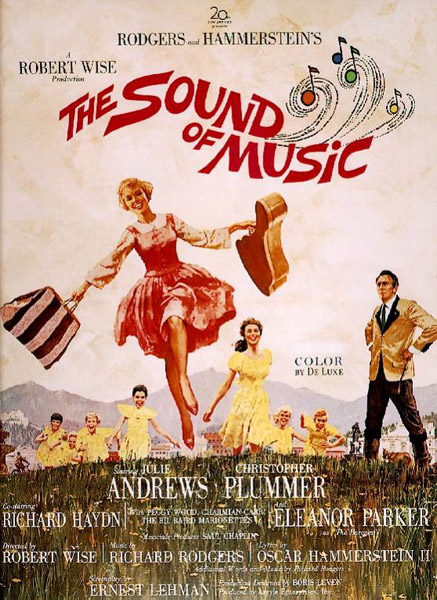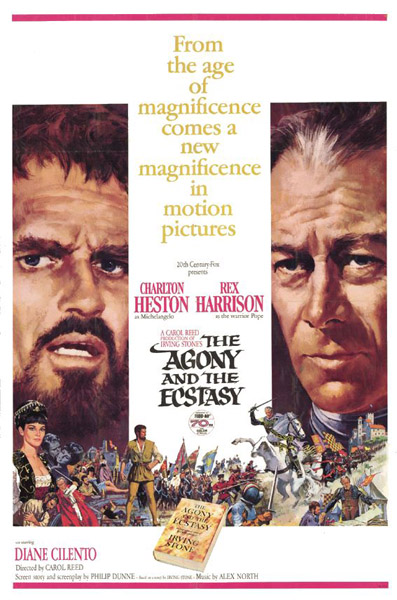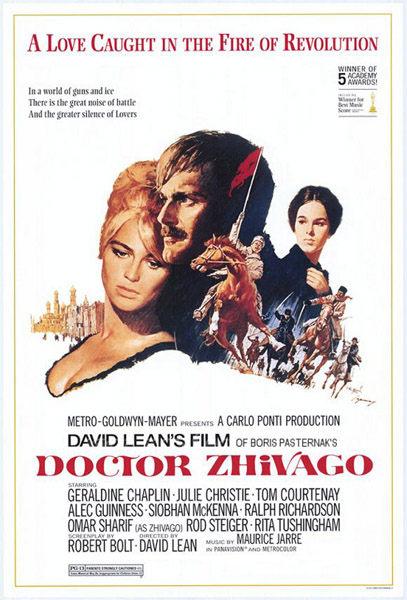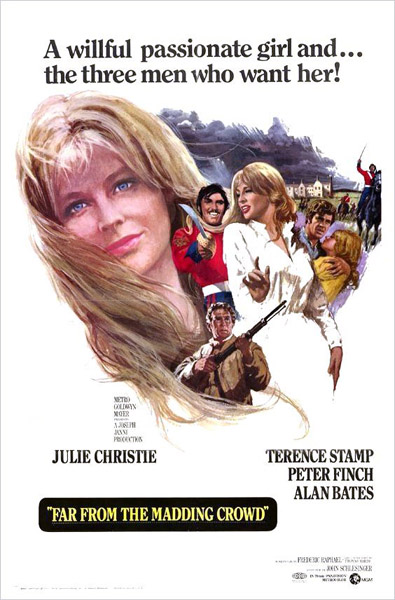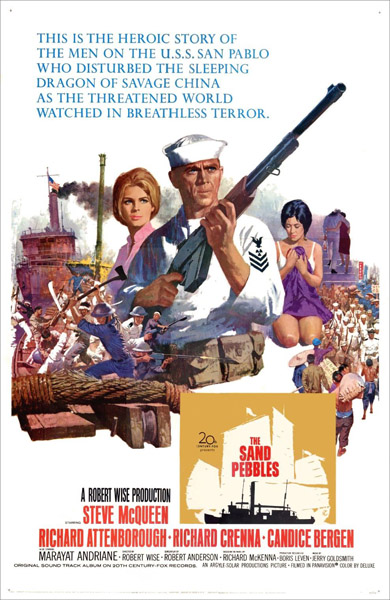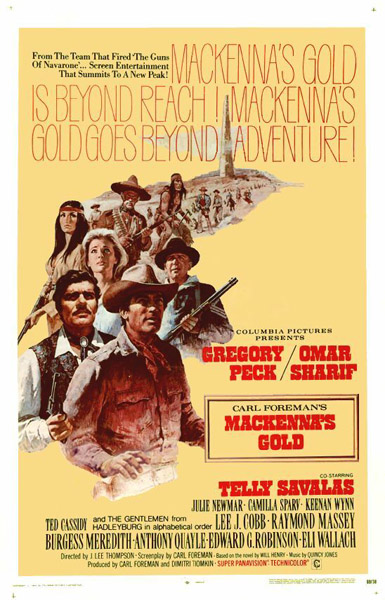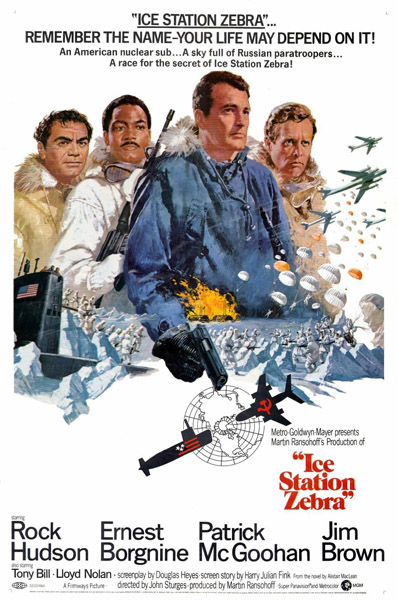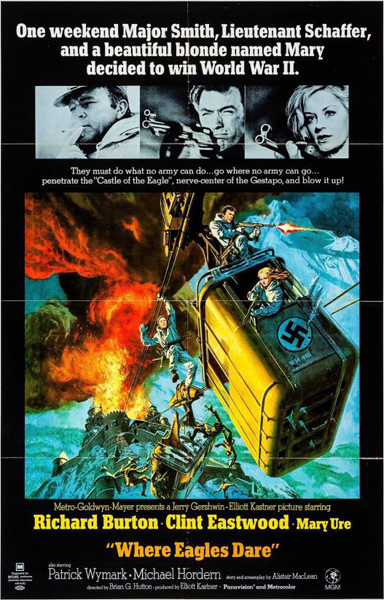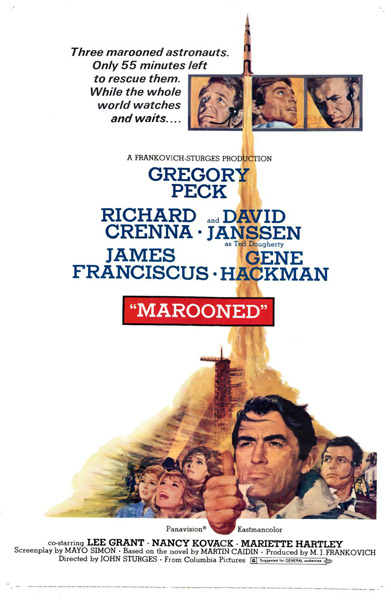Movie Poster Artwork by Howard A. Terpning
|
Read more
at in70mm.com The 70mm Newsletter |
||||||||||||||||||
| Written and collected from the web by: Swoyers Art with additional details by the editor. Special thans to Crispin Garcia, editor of "The Sand Pebbles" site. |
Date:
6 October 2006. Updated 24. December 2021 |
||||||||||||||||||
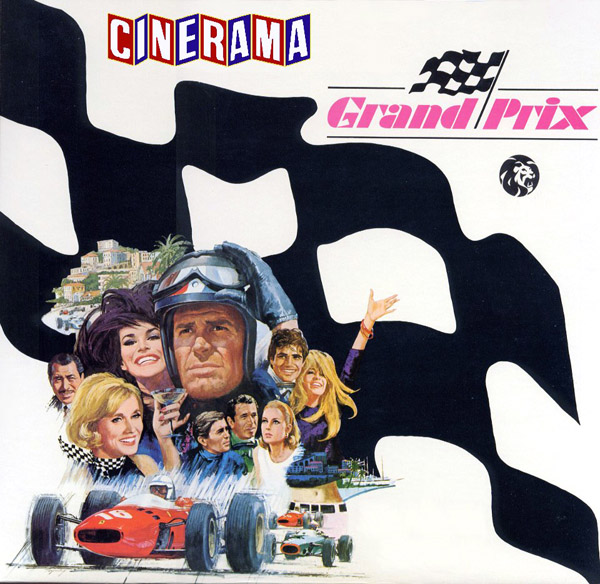 Howard Terpning was born November 5, 1927, in Oak Park, Illinois, birthplace
also of Ernest Hemingway. His father worked for the Northwestern Railroad.
His mother was an interior decorator. As a boy he was torn between two
ambitions: to be an artist or to be a pilot. His brother Jack lived out the
latter ambition, becoming a B-24 bomber pilot in World War II.
Unfortunately, he was lost in New Guinea.
In 1945, at age seventeen, Terpning joined the Marine Corps and served as an
infantryman in China. Afterward, he found educational institutions heavily
enrolled with returned war veterans. He was told he would have to wait in
line to enter the Chicago Academy of Fine Art. His father's friend and
neighbor, illustrator Harold Mundstock, interceded with the academy. Later
Terpning attended the American Academy of Fine Art. Howard Terpning was born November 5, 1927, in Oak Park, Illinois, birthplace
also of Ernest Hemingway. His father worked for the Northwestern Railroad.
His mother was an interior decorator. As a boy he was torn between two
ambitions: to be an artist or to be a pilot. His brother Jack lived out the
latter ambition, becoming a B-24 bomber pilot in World War II.
Unfortunately, he was lost in New Guinea.
In 1945, at age seventeen, Terpning joined the Marine Corps and served as an
infantryman in China. Afterward, he found educational institutions heavily
enrolled with returned war veterans. He was told he would have to wait in
line to enter the Chicago Academy of Fine Art. His father's friend and
neighbor, illustrator Harold Mundstock, interceded with the academy. Later
Terpning attended the American Academy of Fine Art. He had made up his mind to try New York City, but after several discouraging days of looking in vain for work in the many art studios, he returned to Chicago. Mundstock introduced him to Haddon (Sunny) Sundblom, at the time considered the dean of American illustrators. He took Terpning on as an apprentice for thirty-five dollars a week. After five years he moved to Milwaukee, where for three years he painted such subjects as farmers on tractors. Deciding it was finally time for New York, he signed on with Stephens Bionde de Chicco. There for five years he learned to simplify and to work quickly without sacrificing quality. Striking out on his own then, he painted seven days a week, often thirteen hours a day. He averaged eight illustrations a month, a pace that today makes him wonder how he managed. In 1967 he accepted an invitation from the Marine Corps to document Vietnam War scenes as a civilian combat artist. Given a temporary rank of major to allow him relative freedom of movement, he spent a month in Vietnam. Though his weapons were a camera, sketchbook, and pencils, his Marine experience led the combat troops into taking him out on patrols, where they engaged in two firefights with the Viet Cong, and flying him in a medivac helicopter behind the lines to pick up the wounded. Out of that harrowing experience came six paintings now displayed in the Marine Corps Museum in Washington, D.C. Out of it also came something else: a much-diminished regard for material things and a heightened empathy with distressed and deprived people. That empathy would later carry over with much effect into his paintings of the Plains Indians. In all, he worked prolifically as a commercial artist for twenty-five years, seventeen of them in New York City. Besides advertising art, he illustrated stories and articles for such publications as McCall's, Ladies' Home Journal, Reader's Digest, Good Housekeeping, Newsweek, and Time. He painted more than eighty movie posters, starting with "The Guns of Navarone". They include "Doctor Zhivago", "Cleopatra" and a reissue of "Gone With the Wind". One of his favorites is a poster for "The Sound of Music". He became restless, however. Though financially rewarding, the commercial work was no longer satisfying to him as an artist. To meet his creative urge for something more permanent, he began painting portraits for his own pleasure. Among the first was Sioux Chief Gall, done for his daughter Susan. In the summer of 1974, at age forty-seven, he took a couple of months off from his commercial work and finished three easel paintings on speculation and hope. The feeling of freedom, of painting what he wanted instead of commissioned pieces, work done to order, made that summer one of the most satisfying of his life as an artist. He sent the canvases to Troy's Gallery in Scottsdale, Arizona, which sold them in January 1975. That was a turning point. Gradually he reduced his commercial accounts, accepting fewer assignments. Born in Oak Park, Illinois, and educated at the Chicago Academy of Fine Arts and the American Academy of Art, Terpning went the apprentice route to work his way to New York and commercial illustration. Having built a successful career in advertising illustration, he gave it up in 1976 and moved to Tucson to become a western painter, and in just a few years he won the respect and admiration of his peers, and a vast following for his works. In 1976, he walked away from a successful illustration career to pursue his dream of chronicling the Native American people. Within two short years he became one of the giants in his field. |
More
in 70mm reading: "Cleopatra" Revisited Internet link: "The Sand Pebbles" Google Search Movieart Poster artists fineart.pub AskArt.com |
||||||||||||||||||
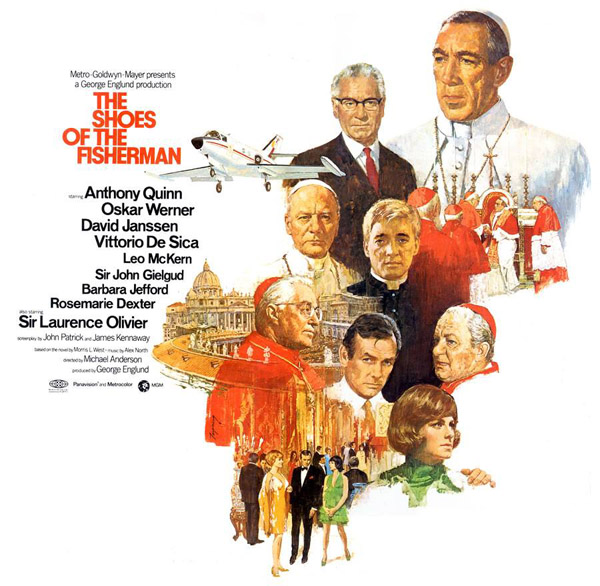 In March
2006, I contacted Howard Terpning's son, Mr. Steven
Terpning and suggested he and his dad wrote the story about
Howard A. Terpning's Hollywood years. Alas, Mr. Terpning is not
interested.
Until a story can be written, the posters will have to speak for
themselves. In March
2006, I contacted Howard Terpning's son, Mr. Steven
Terpning and suggested he and his dad wrote the story about
Howard A. Terpning's Hollywood years. Alas, Mr. Terpning is not
interested.
Until a story can be written, the posters will have to speak for
themselves.
Only in very few cases, the names of poster artists are familiar
names. Usually, the artist is completely unknown. Perhaps with the
exception of Saul Bass. This page starts the search for movie poster artists
who have been unknown for too long.
Howard Terpning was one artists among several who specialized in
making movie posters - which in some cases are collectors items
today. Some of his colleagues from that era were: |
|||||||||||||||||||
Some of Howard Terpning's 70mm Film Poster Art Works |
|||||||||||||||||||
|
|||||||||||||||||||
Native American Western Art by Howard Terpning |
|||||||||||||||||||
|
Quite simply, Howard Terpning is one of the most lauded painters of Western art. His awards are so numerous and he is honored with them so often, that to list them would require changing the count every few months. To name three would be to cite the highest prizes awarded to Western art: countless awards from the Cowboy Artists of America, the Hubbard Art Award for Excellence, the National Academy of Western Art’s Prix de West and the Lifetime Achievement Award from the Autry National Center. Why such praise? Passion, compassion, devotion and respect for his subject matter, extraordinary talent in palette and brushstroke, an exceptional ability to evoke emotion both in his paintings and from those viewing them — all this and more has made Terpning the "Storyteller of the Native American." Born in Illinois and educated at the Chicago Academy of Fine Arts and the American Academy of Art, he first gained attention with his captivating advertising and story illustrations. Film fans praised his movie posters for such classics as The Sound of Music, Dr. Zhivago and the re-issue of Gone with the Wind. But his love of the West and Native American traditions saw his transition to fine art. Terpning is an Emeritus member of the Cowboy Artists of America, active for 22 years, during which time he was presented with a total of 41 awards. His book, The Art of Howard Terpning won the Wrangler "Outstanding Art Book" award from the National Cowboy Hall of Fame. Terpning was recently honored with a one-man show at the Eiteljorg Museum of American Indians and Western Art in Indianapolis, Indiana featuring 30 of the artist’s most distinguished works where he was presented with the Lifetime Achievement Award. This career milestone was further celebrated with the publication of Spirit of the Plains People (2001, Greenwich Workshop Press). Terpning is the recipient of the Autry National Center, 2005 Masters of the American West Thomas Moran Memorial Award, given in recognition of exceptional artistic merit for painting. |
|||||||||||||||||||
|
Go: back
- top -
back issues
- news index Updated 22-01-25 |
|

